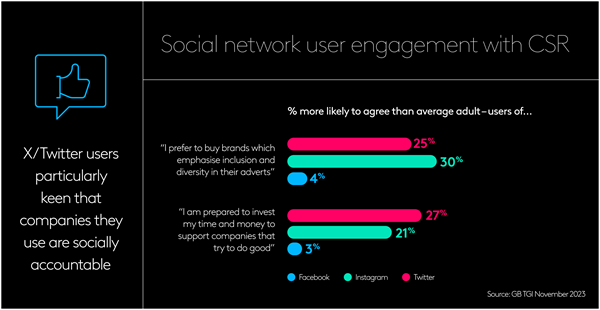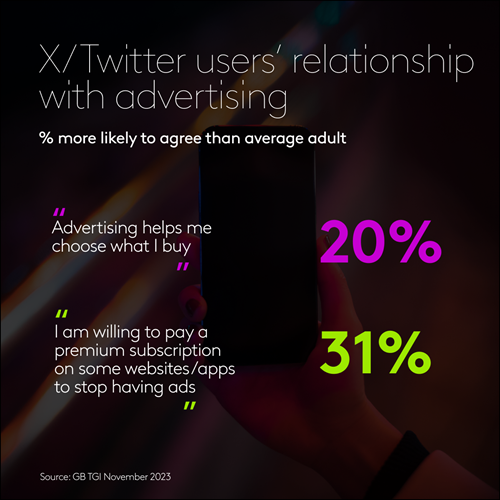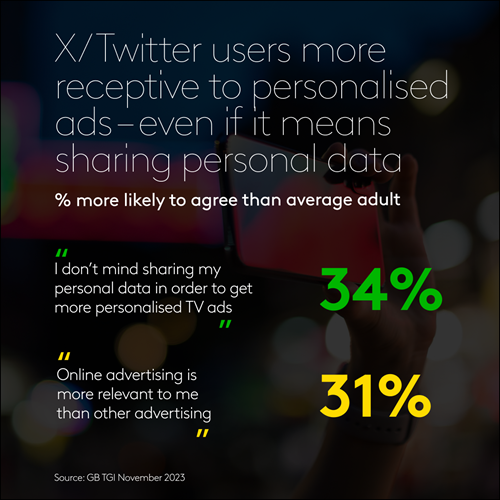Twitter users are particularly keen that companies they use are socially accountable

Social media platform X, previously known as Twitter, has had a tough time recently with a number of major brands – including Apple, Disney and IBM – pausing their advertising on the site amid concerns about antisemitic content appearing near advertising.
This comes in the wake of Meta’s launch of Threads earlier this year, which, despite a strong initial start, has not yet realised a significant migration of users from Twitter to its platform.
Indeed, latest GB TGI data shows that 4% of British consumers claim to have used Threads ‘in the past 4 weeks’, compared to 26% for X/Twitter.
As for how users of X/Twitter feel about corporate social responsibility compared to other social media users, TGI shows that they are a quarter more likely than the average adult to claim that they prefer to buy brands which emphasise inclusion and diversity in their adverts. They are also more likely to claim they are prepared to invest their time and money to support companies that try to do good.
However, it should be noted that users of many of the big social networks are considerably more likely than the average to agree with such sentiments. The obvious outlier is Facebook, but that can in part be explained by its sheer scale compared to other platforms (the closer to 100% consumer penetration a platform has achieved, consequently the harder it is for its users to show as meaningfully different from the average).

When it comes to their relationship with advertising, X/Twitter users are significantly more likely than the average adult to engage with advertising generally. This includes agreeing that advertising helps them choose what to buy and to often notice the advertisements on the internet.
However, the advertising needs to be correctly targeted, as X/Twitter users are especially likely to be willing to pay a premium subscription on some websites/apps to avoid ads.

Similarly, X/Twitter user users don’t necessarily mind sharing data if it means more personalised ads.
They are also particularly likely to pay attention to online ads above other forms of advertising.
